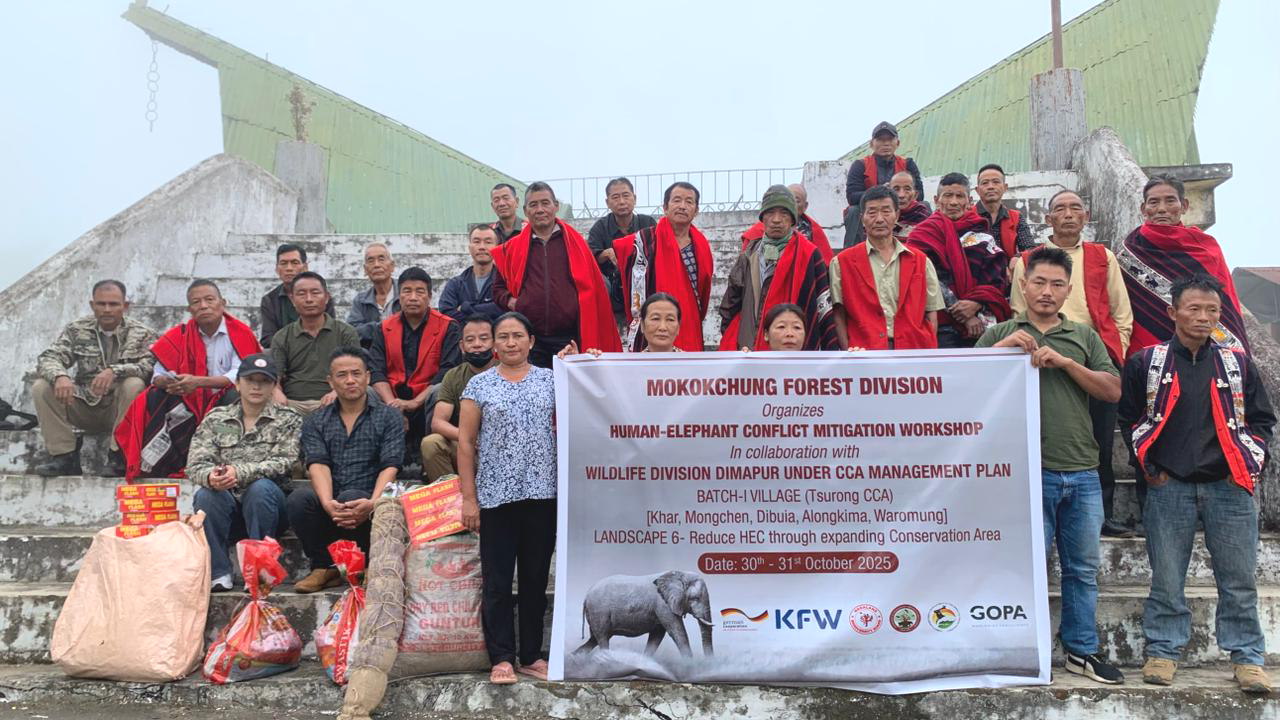The “Forest and Biodiversity Management in the Himalaya, Nagaland” Project (FBMP) Co-financed by Federal Republic of Germany through KfW (German Development Bank) is being implemented under Mokokchung Forest Division. Batch-1 village includes Khar, Mongchen, Dibuia, Alongkima and Waromung and Batch-2 village includes Unger, Changtongya Old, Akhoya and Nukshiyim village.
The objectives of this Project includes promotion of sustainable and effective management of forest and biodiversity in the state of Nagaland, to support improved connectivity and conservation of Biodiversity, to create and enhance livelihood opportunities of dependent communities, and to put in place incentive mechanisms rewarding communities for effectively protecting and maintaining their Community Conserved Areas stated Dr Sentitula, IFS, Divisional Forest Officer (DFO), Mokokchung
The Forest Department, Mokokchung Division, in collaboration with the Wildlife Division, Dimapur, successfully organised a two-day training/workshop on Human-Elephant Conflict Mitigation under the Community Conservation Area (CCA) Management Plan.
The programme was held on October 30 and 31, covering Batch 1 villages (Khar, Mongchen, Dibuia, Alongkima and Waromung). On October 30, the team visited Khar, Mongchen, and Dibuia villages, while on October 31, visits were made to Waromung and Alongkima villages, where members of the Village Councils and CCA Committees actively participated.
Download Nagaland Tribune app on Google Play

During the sessions, the Wildlife Division team shared detailed insights on the behaviour and characteristics of elephants and demonstrated practical, non-lethal methods to safeguard farmlands and settlements without harming the elephants.
Demonstrations included preparing and using grass bundles containing dry chilli and tobacco, chilli-grease fencing, fireballs for deterring elephants from a distance, and other precautionary measures to prevent crop and property damage.
Villagers were also informed about the reporting procedure in case of elephant-related damages, wherein affected areas can be geo-tagged, documented through the respective Village Council, and reported within 72 hours to the nearest Forest Range Office for immediate response and possible compensation assessment.
The Wildlife team also distributed emergency materials and deterrent tools to the Village Councils for future use.
Villagers expressed gratitude, noting that it was their first time learning about preventive and non-harmful measures to manage elephant intrusion. They appreciated the initiative and showed willingness to apply the techniques in their areas.

